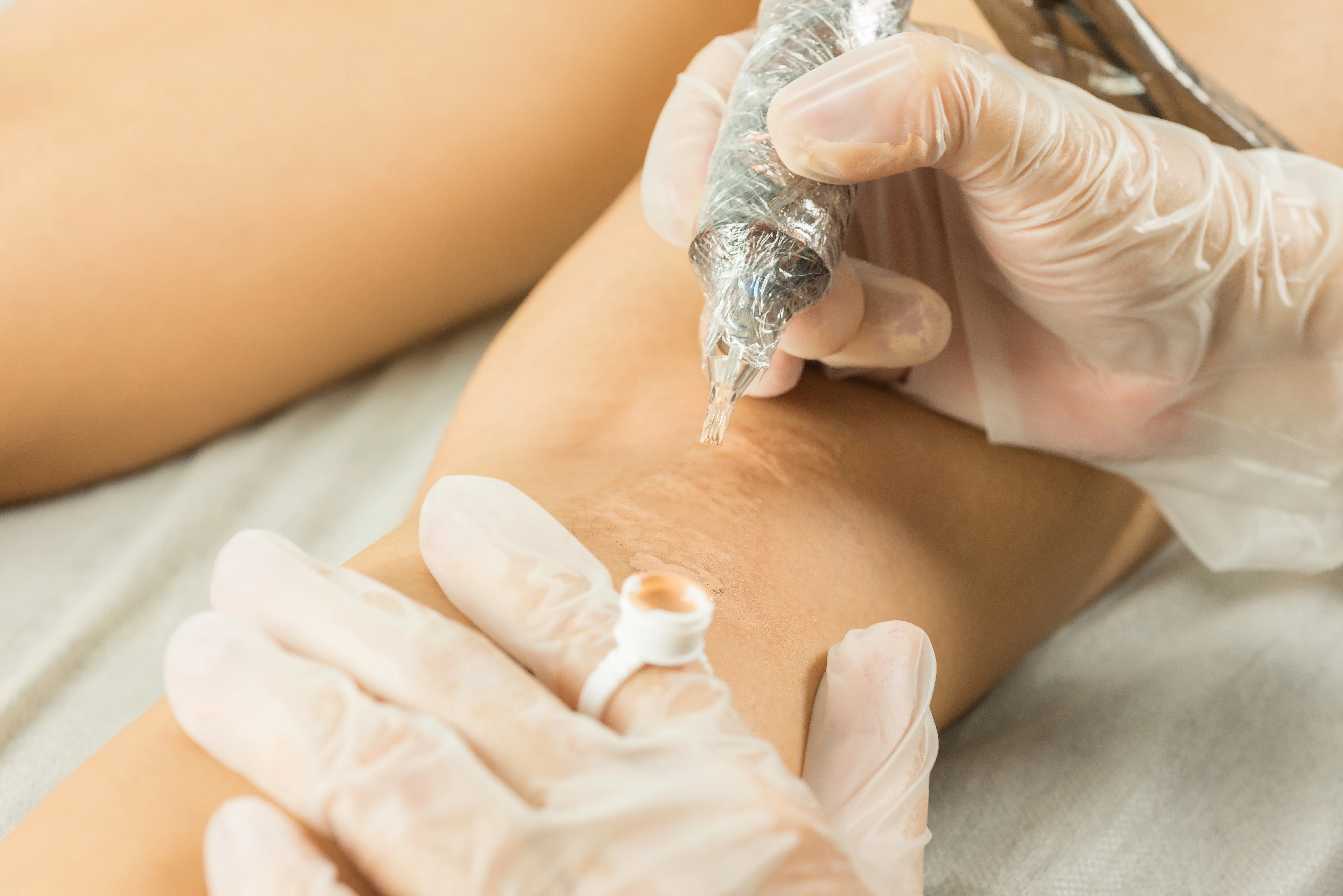Medical Tattooing for Scars: An Effective Option for Natural-Looking Results

Scars are a common part of many surgical journeys, from tummy tucks to breast lifts to reconstruction. While scars often fade over time, sometimes they remain more visible—especially when they’re lighter than the surrounding skin. Medical tattooing offers an excellent solution for patients looking to blend or camouflage these areas, helping them feel more confident in their skin.
What Is Medical Tattooing for Scars?
Medical tattooing (also known as paramedical or micropigmentation tattooing) is a specialized technique where a skilled artist uses pigments matched to your skin tone to disguise scars or skin discoloration. The goal is not decorative art, but medical camouflage: helping the treated area blend naturally with the surrounding skin.
It’s especially helpful for hypopigmented scars—areas that have lost pigment and look lighter than your normal skin tone. Examples include tummy tuck scars, breast lift scars, or any surgical incision that healed with lighter coloration .
Why I Recommend Medical Tattooing
As a plastic surgeon, I recommend medical tattooing to many of my patients. It’s particularly valuable for:
- Tummy Tuck Scars: These often heal as lighter lines across the lower abdomen. Tattooing can even out the color, making them less noticeable.
- Breast Lift Scars: Natural areolas aren’t perfectly uniform. Even after precise surgical closure, the area around the areola can lack the natural fade of pigment. Medical tattooing can recreate that subtle, realistic gradient.
- Breast Reconstruction: Patients who’ve had breast reconstruction after mastectomy often need nipple-areola complex reconstruction. Medical tattooing can create highly realistic, 3D-looking nipple-areola tattoos that match your skin tone.
- Vitiligo: For patients who want to even out areas of lost pigment, medical tattooing can help camouflage spots and blend them with surrounding skin .
How the Process Works
Typically, you’ll meet with an experienced medical or paramedical tattoo artist who specializes in working with scars or skin conditions. They’ll:
- Evaluate your skin tone and the scar or area to be treated.
- Mix tattoo inks to match your natural pigment as closely as possible.
- Apply the pigment in layers to create a realistic blend.
It’s important to note:
- Sun exposure matters: If you tan significantly after tattooing, the tattooed area might no longer match as well. Sun protection is key to maintaining results.
- Fading over time: Like all tattoos, medical tattoos can fade. Some patients may need touch-up sessions to keep the color even .
Is Medical Tattooing Right for You?
If you have a scar that’s lighter than your normal skin, or if you’re undergoing breast reconstruction and want a realistic nipple-areola tattoo, this treatment may be a fantastic option. It’s safe, effective, and can deliver a more natural, seamless appearance.
I’m a strong advocate of medical tattooing and often recommend it to my patients who want to reduce the visibility of scars or even out skin tone differences.
Our surgical and non-surgical treatment options
Ready to start your transformation?
Whether you’re just beginning to explore your options or have specific goals in mind, we’re here to guide you with expertise and compassion.

Read more articles

Hyaluronic Acid for Dry, Chapped Lips
Dry, chapped lips? Layer a few drops of hyaluronic acid serum under your lip balm to restore hydration and smoothness. This simple step helps your lips stay soft and moisturized—even in dry climates.

Why I Wear UPF Clothing (and You Should Too)
UPF clothing is one of the easiest ways to protect your skin from UV damage—especially while driving or spending time near windows. Dr. Victoria Aimé shares how she uses UPF sleeves, gloves, and hats daily, and why this sun-smart habit is a must for long-term skin health.

Medical Tattooing for Scars: An Effective Option for Natural-Looking Results
Learn how medical tattooing can effectively camouflage scars and hypopigmented areas. Ideal for tummy tuck scars, breast lift scars, or post-reconstruction areolas, this treatment blends pigment naturally for more confident, seamless results.

How to Choose and Use Sunscreen: What SPF Really Means
Not all sunscreens are created equal. Learn what SPF really means, how to apply sunscreen correctly, and which options Dr. Aimé recommends for daily protection.
